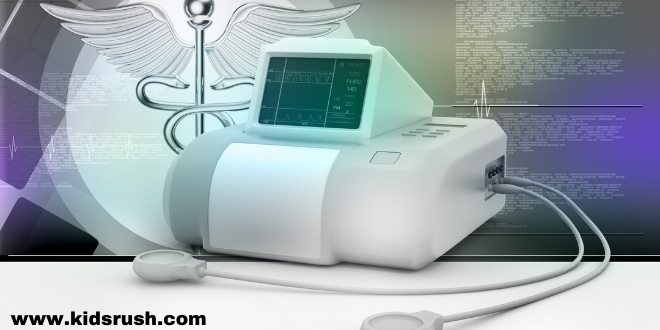Fetal distress is a delicate disorder that requires close attention. The most advisable thing is to remain attentive to the signs of Alamar that may appear during pregnancy and delivery.
Generally, fetal distress occurs suddenly; hence the importance of keeping its causes in mind. This means being attentive to the evolution during pregnancy to detect complications that may arise in time.
Failure to act on time can cause brain damage in the baby that will leave sequelae for the rest of life. However, technological advances in medicine have significantly reduced the presence of these disorders caused by fetal distress.
What is fetal distress and what is its symptomatology?
Fetal distress is a disturbance in the exchange of oxygen and nutrients between the fetus and the mother, via the placenta. Usually, this situation occurs shortly before or during delivery. This is the reason why the baby should be monitored to verify that he is well.
Read Also: 6 Types of childbirth and their characteristics
If the pregnant mother has any of the following symptoms, she should contact her doctor immediately and follow the instructions indicated by the professional:
- Absence of movement of the fetus in a period of more than 24 hours. In this case, it is recommended to consume something sweet and lie on the left side to monitor the reappearance of movements in a home way.
- Vaginal bleeding. Although vaginal bleeding may occur during pregnancy, it may only respond to the spot. In any case, if it persists or is abundant, it constitutes a sign of alarm.
- Premature rupture of membranes. This condition is also known as breaking water or breaking fountains. A clear liquid with a bleach-like odor appears from the vagina.
- Colicky. They can have various causes. In fact, they are normal if they have to do with the growth of the fetus. But if they are frequent, intense, and involve the back, they should receive attention.
- High blood pressure. It is a symptom of pre-eclampsia and can be life-threatening, both for the mother and the fetus.
- Weight gain or loss. This refers to an exaggerated increase or decrease in weight, which may be associated with other diseases.
Read Also: How to diet in pregnancy
What happens if there is fetal distress?

The evolution of fetal distress involves hypoxia (oxygen deficiency in the blood) and acidosis (accumulation of acid in the bloodstream). If they get worse, they lead to a much more serious condition.
This situation can lead to a drop in the baby’s heart rate and blood pressure. In the most serious cases, a multi-organ failure continues, that is, of several organs at the same time. The next step is a life-threatening shock.
After birth, babies undergo the Apgar test, which consists of an assessment to determine the degree of fetal vitality upon leaving the uterus. Likewise, a pH test is carried out to determine the level of acidosis present in the newborn’s umbilical cord blood. These elements make up the basics to diagnose the existence or not of fetal distress.
Causes of fetal distress

When the time of delivery approaches and the mother has arrived at the hospital, one of the first protocols that are carried out consists of monitoring the baby. This procedure is performed to monitor the functions of the baby, in case of fetal distress.
Although the causes that generate this condition are diverse, the mother must be vigilant, especially from the third trimester. Let’s look at the most frequent etiological reasons.
In pregnancy
During the course of pregnancy, the main causes are the following:
- Maternal: different types of conditions that the mother presents involve a poor supply of oxygen to the fetus. Among the most important are maternal hypoxia, arterial hypotension, and, conversely, arterial hypertension, or pre-eclampsia.
- Placental: originate in the placenta and can give rise to fetal distress. Among the most common are placental abruption, premature aging of the placenta, and placenta previa.
- Funicular: are those that involve the umbilical cord, such as the presence of knots in it, twisting or twisting of the cord, and very short extension or prolapse.
- Fetal: the origin may be associated with hemolytic anemia, an infection, or Rh incompatibility between the fetus and the mother.
- Uterine: they are due to the presence of a tumor in the uterus or due to the supine decubitus syndrome. This particular case happens because the woman spends too much time lying on her back, which compresses the large veins in the abdomen that carry blood to the uterus.
In childbirth
In addition to the causes that can occur during pregnancy giving rise to fetal distress, there are conditions during childbirth that can lead to the appearance of the condition. The most important are the following:
- The age of the mother, whether it is someone very young or over 35 years old.
- When they are new mothers or have had many previous births.
- If the mother has a history of malformations, prematurity, or fetal death in previous gestations.
- When your due date is several weeks past or labor is very long.
- If the baby is excessively large and its exit through the vaginal canal is complicated due to its size.
Should I be concerned about fetal distress?

It is not necessary to obsess over fetal distress and its possibility of onset, but it is prudent for the pregnant woman to carry out the corresponding controls every month. Besides, you should receive advice on the warning signs for an immediate consultation.
There are certain healthy habits, such as a balanced diet, active life, and forms of rest that all mothers can apply in their daily lives to reduce future risk. Health professionals are trained to provide this counseling.
